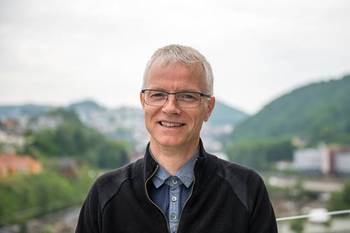Resilience In The Face Of Adversity
Having demonstrated considerable fortitude in withstanding an intensified competitive onslaught over recent years, Japan's shipbuilding industry is hoping that South Korea will not put even greater emphasis on exports as part of its drive to overcome financial crisis.
Japanese yards wholeheartedly embraced technological initiatives in a determined bid to raise productivity at a time when they were most seriously disadvantaged by the strength of the Yen.
Rising newbuilding demand over a period of improvement in the currency relationship enabled the industry in Japan to realize the steady gains in efficiency resulting from earlier commitments to new systems and improved organization.
A distinct leaning toward standardized output in a general merchant shipbuilding context has meant that the effect of, and the yield from, capital expenditure and modernization has been optimized by batch or series production. The downside of a shipyard-led emphasis on a standard specification is the premium that has to be paid by an owner for any measure of tailoring. The upside is efficient contractual performance and build quality at a competitive price.
But there are fears that the impact of South Korea's national economic crisis on currency values and restructural planning will be a redoubling of efforts on overseas markets.
Refund guarantees are currently perceived by some owners as a potential problem at certain yards on the peninsula, but the conclusion in recent months of a number of newbuilding deals with high-profile foreign operators demonstrates that such a view is not held in every quarter.
Coinciding with the deepening of South Korea's financial turmoil, world shipbuilding statistics issued by one authoritative source, Lloyd's Register, pointed to the backlog of newbuilding work in South Korea having overhauled that of Japan's shipbuilders.
A very high level of new contract intake, amassing to twice the amount of tonnage completed over a three-month period, saw South Korea edge above Japan in the world shipbuilding stakes in regard to total orderbook, as of September 30, 1997. Since output is a better indicator of production and overall Pictured is 72,000-dwt bulker Rubin Power, which is controlled by Navix Line, which has ordered SpecTec shipboard systems for its entire fleet.activity, though, it was significant that Japanese completions of 2.131 million-gt and 1.444 million-compensated gross tons (cgt), during the third-quarter of the calendar year, remained in excess of South Korea's deliveries.
Japan's work tally, accounting for 31 percent and 27 percent of the world total by gt and cgt respectively, is at its highest level in years, 50 percent more than it was in 1985 and three times that of the slump years of 1987-88.
Nonetheless, South Korean yards have trebled their workload over the same period, and their current two-year contract backlog represents a substantial platform from which to launch a restructure of the industry. Figures issued by the Japan Ship Exporters' Association (JSEA) showed that the exportdesignated contract intake in the 1997 calendar year, including tonnage built for foreign affiliates of Japanese companies, had reached273 vessels of 11 million-gt by the end of November, compared with 234 of 7.7 million-gt for the whole of the year before.
In line with the positive trends in demand, and out of consideration of recent years' generation of new capacity in South Korea, government controls on Japanese capacity have been relaxed to some degree. A number of yards have been permitted to increase the extent of simultaneous construction of ships up to a certain size, thereby providing builders withPictured is Halo Olympus, a 1997-built Optimatype from Hitachi Zosen, one of the world's most prolific builders of Panamax bulkers. greater flexibility in responding to the market's needs and realizing efficiencies in unit construction costs. There are also plans to reactivate docks for newbuilding purposes.
Sensitivity to South Korean expansion, albeit now halted by the national economic crisis, is heightened by the fact that Japanese shipbuilding has cut its physical capacity twice in the past two decades — in fiscal 1979 and 1987. Thus from its peak of 18 million- gt in 1975, the industry is currently sized at some 10.5 to 11 million- gt.
The indications are that this may be brought up to around 11.5 to 12 million-gt by the end of 2000.Big Investment In Technology Japanese shipbuilders' unfailing trust in technology as a tool for maintaining competitiveness in the face of demanding market conditions and adverse labor supply trends is manifested across a broader-than-ever range of applications. Three companies, Mitsubishi Heavy Industries (MHI), Mitsui Engineering & Shipbuilding (MES) and Sumitomo Heavy Industries (SHI), are investing more than Yenl billion into a new system which addresses the gradual reduction in the number of long-serving skilled personnel on the production floor.
Ishikawajima-Harima Heavy Industries (IHI), Kawasaki Heavy Industries (KHI), Hitachi and Nippon Kaiiji Kyokai (NKK) will also be involved in the three-year program, which will be partially funded by the Ship & Ocean Foundation and the Nippon Foundation.
Constituting a major collaborative initiative in the CIM (computer integrated manufacturing) field, the project seeks to make yards less dependant on the skills and long experience of senior foremen and other key people by obviatingthe need for individuals to input data into microprocessor-controlled systems. As testimony to the spread of Japanese shipbuilding influence, 1997 saw the delivery of the first vessels from a joint venture yard in the Philippines and the start of the ship construction program at a new joint undertaking in China.
Sea Amelita led a class of 23,400- dwt geared bulkers entrusted to Tsuneishi Heavy Industries Cebu, established on a greenfield site near Balamban by Tsuneishi in conjunction with the diversified Aboitiz Group of the Philippines. The vessel was completed within two years of the ground being broken at the site on the west coast of Cebu Island, to which Tsunieshi had committed 100 Japanese supervisors. The yard is anticipated to attain a level of welding skills comparable to that of its parent





